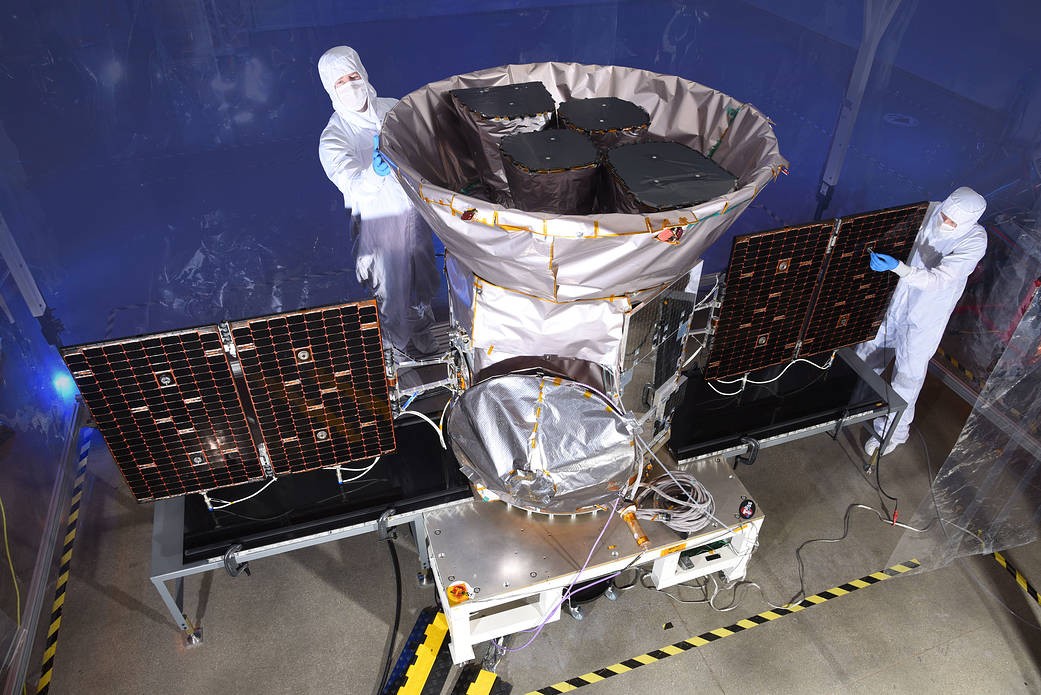Popular Reads
Top Results
Can't find what you're looking for?
View all search resultsPopular Reads
Top Results
Can't find what you're looking for?
View all search resultsNASA telescope discovers two new planets five months after launch
Change text size
Gift Premium Articles
to Anyone
A
planet-hunting orbital telescope designed to detect worlds beyond our solar system discovered two distant planets this week five months after its launch from Cape Canaveral, Florida, officials said on Thursday.
NASA’s Transiting Exoplanet Survey Satellite, better known as TESS, made an early discovery of “super-Earth” and “hot Earth” planets in solar systems at least 49 light-years away, marking the satellite’s first discovery since its April launch. TESS is on a two-year, $337 million mission to expand astronomers’ known catalog of so-called exoplanets, worlds circling distant stars.
While the two planets are too hot to support life, TESS Deputy Science Director Sara Seager expects many more such discoveries.
“We will have to wait and see what else TESS discovers,” Seager told Reuters. “We do know that planets are out there, littering the night sky, just waiting to be found.”
TESS is designed to build on the work of its predecessor, the Kepler space telescope, which discovered the bulk of some 3,700 exoplanets documented during the past 20 years and is running out of fuel.
NASA expects to pinpoint thousands more previously unknown worlds, perhaps hundreds of them Earth-sized or “super-Earth” sized - no larger than twice as big as our home planet.
Those are believed the most likely to feature rocky surfaces or oceans and are thus considered the best candidates for life to evolve. Scientists have said they hope TESS will ultimately help catalog at least 100 more rocky exoplanets for further study in what has become one of astronomy’s newest fields of exploration.
Read also: NASA's new planet-hunter to seek closer, Earth-like worlds
MIT researchers on Wednesday announced the discovery of Pi Mensae c, a “super-earth” planet 60 light-years away orbiting its sun every 6.3 days. The discovery of LHS 3844 b, a “hot-earth” planet 49 light-years away that orbits its sun every 11 hours, was announced on Thursday.
Pi Mensae c could have a solid surface or be a waterworld as the composition of such planets is a mixed bag, Martin Spill, NASA’s program scientist for TESS, said in a phone interview.
The two newest planets, which still need to be reviewed by other researchers, offer the chance for follow-up study, officials said.
“That, of course, is TESS’ entire purpose - to find those planets around those brightest nearby stars to do this really detailed characterization,” Spill said.
With four special cameras, TESS uses a detection method called transit photometry, which looks for periodic dips in the visible light of stars caused by planets passing, or transiting, in front of them.






![Let it out: Japanese rocker Hyde holds a solo concert, billed as the Hyde [Inside] Live 2025 World Tour in Jakarta, on Nov. 1, 2025, at Tennis Indoor Senayan in Central Jakarta.
(Courtesy of Sound Rhythm and Mataloka Live)](https://img.jakpost.net/c/2025/11/05/2025_11_05_168574_1762306300._medium.jpg)




